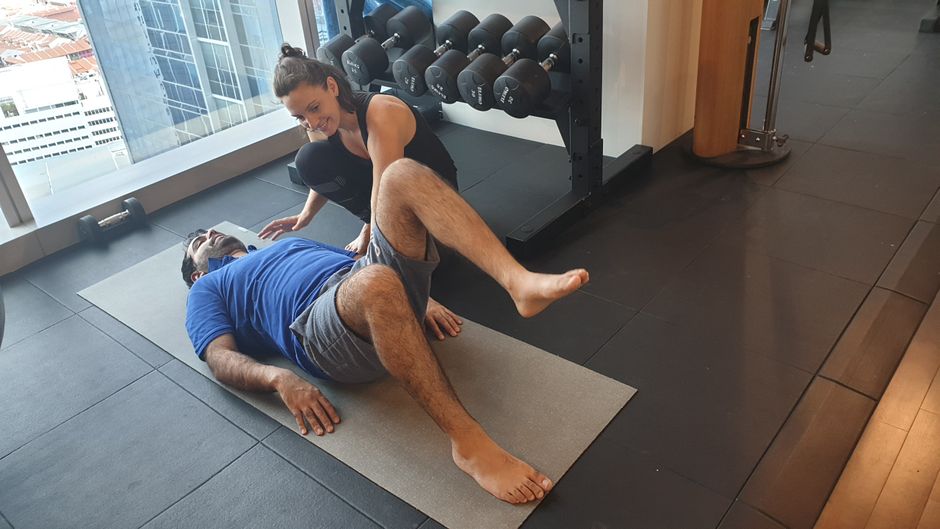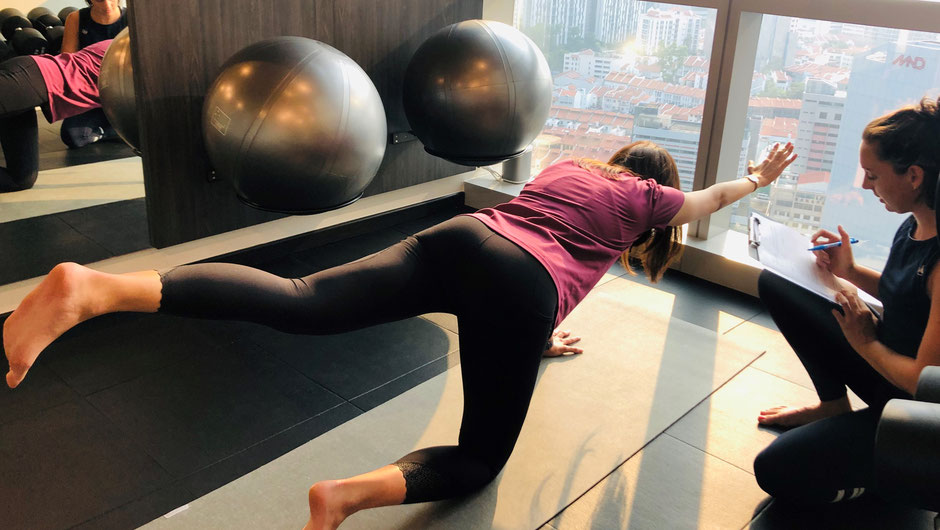Our modern lifestyle such as sitting at a desk 8 hours or more a day, looking down at our phones all the time, wearing high heels or tight shoes, puts a lot of stress on our bodies and affects our ability to maintain good posture throughout the day.
The practice of certain sports that include a lot of repetitive movements (e.g. running and cycling) or movement favouring one side of the body (e.g. golf) will also compromise good posture because it only strengthens a specific side of the body.
Additionally, poor posture will create muscle imbalances, incorrect movement patterns, and will lead to neuromusculoskeletal dysfunction, potentially pain and will also speed up the aging process.
And this is where corrective exercise comes in to rewind the detrimental effects of our modern lifestyles.
What is corrective exercise?
All exercise is not created equal and doesn’t serve the same purpose. Bodybuilding focuses on developing a specific type of physique or body shape irrespective of underlying dysfunction Strength training, as you can guess, focuses on developing specific strength. Corrective exercise on the other hand, is a form of exercise that focuses on restoring good posture and musculoskeletal balance, fixing any dysfunction and bringing the body back to its normal state. This should be done before embarking on any bodybuilding, strength training or cardiovascular pursuits.

Here are some examples of what a corrective exercise program could include:
- Breathing exercises to restore proper breathing pattern
- Myofascial release of tight areas (e.g. foam rolling)
- Stretching of shortened muscles (e.g. calves)
- Strengthening exercises for weak muscles (e.g. deep core muscles)
- Exercises to correct ankle and foot mechanics
- Mobility exercises for joints (e.g. shoulders and hips)
- Balancing exercises
It is also crucial to note that in order for these exercises to be effective, the corrective exercise program needs to be 100% tailored to your needs. Your body is super unique and will adapt differently to your lifestyle, so an exercise that will be beneficial for your best friend could be completely counterproductive for you.
So typically, when developing a programme, it's advisable always to begin with a detailed assessment of your static and dynamic posture, your overall flexibility and mobility, and how your body moves in general.
This assessment will help us identify postural issues, if any, muscle imbalances, and any dysfunction in the muscular, articular, and nervous systems. Only once we know exactly what needs to be corrected, can a proper corrective exercise programme be created.

What are the benefits of corrective exercise beyond helping to maintain good posture?

(1) It helps to eliminate pain. One of the main reason for back, neck and shoulder pain is because of muscular imbalances. For more details on the hidden causes of back pain read this. And check this article out to find out the root causes and solutions for neck and shoulder pain.
(2) Injury prevention. A lot of injuries (non contact ACL tear, disc bulges, any tendinitis to name a few) happen because the body doesn’t move properly or
because of poor posture. Making sure you have a good posture and good joint mechanics will definitely reduce the risk of injury. Remember, prevention is better than cure!
(3) Injury recovery and return to sports. An injury will very likely cause muscle imbalances. If you sprain your ankle, you will probably limp for a couple of
weeks and will carry most of your bodyweight on your un-injured leg. This unharmed leg will get stronger while your injured leg’s strength will weaken. If you go back to your regular running
routine without fixing this imbalance you are likely to get injured again.
(4) Improve athletic performance. Corrective exercise will help strengthen weak muscles, improve motor control, and will increase range of motion in stiff joints, all these contributing improved performance in all sports.
(5) Improve feelings of general well-being. There is really no better feeling than a pain free strong body that moves optimally.
In conclusion, whether you’re an athlete, or have a desk job with limited physical activity or are currently injured, or you want to ensure that you have good posture even as you age, corrective exercise is beneficial for you. More specifically, if you want to eliminate pain, improve your performance in your sport, or reach your fitness goals while avoiding injuries, boost longevity then, incorporating corrective exercise in your routine is one of the best things you can do for your health.
To your, health, happiness and longevity,
The Levitise Team
P.S. If you love this blog post then do check out our fortnightly newsletter where you'll get the freshest content on health, nutrition and fitness delivered straight to your inbox. Don't miss out and sign up here with just your name and email.

Write a comment
Gudrun Reiss (Saturday, 04 July 2020 00:47)
Hi there,
I would like to find out more. I am 55 and suffer insomnia and lack of exercise and need to work on toning. Plus being in menopause I have put on weight that I want to loose.
Please contact me on 88216472 or gudrunreiss@hotmail.com
Alex (Saturday, 04 July 2020 02:54)
Hi Gudrun - sure we'll get in touch, speak soon